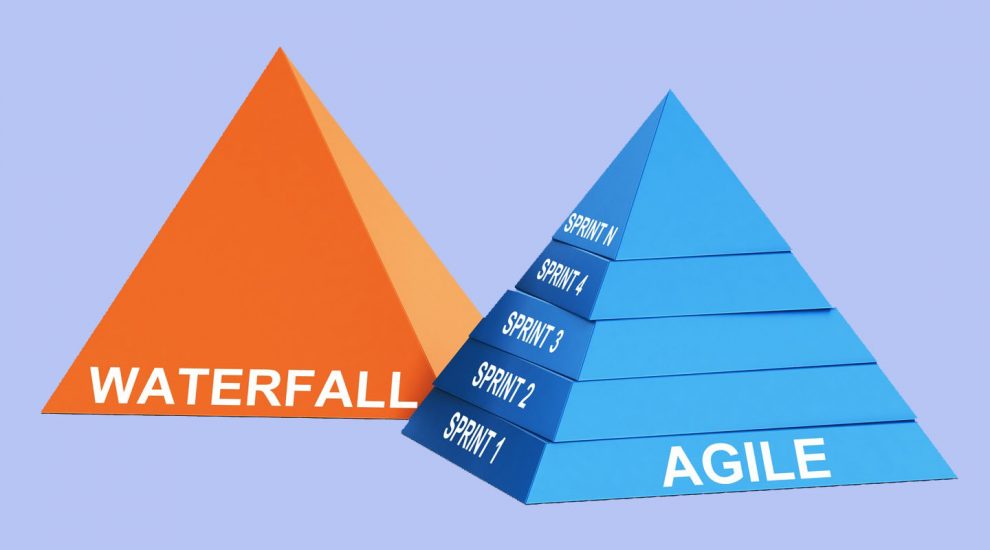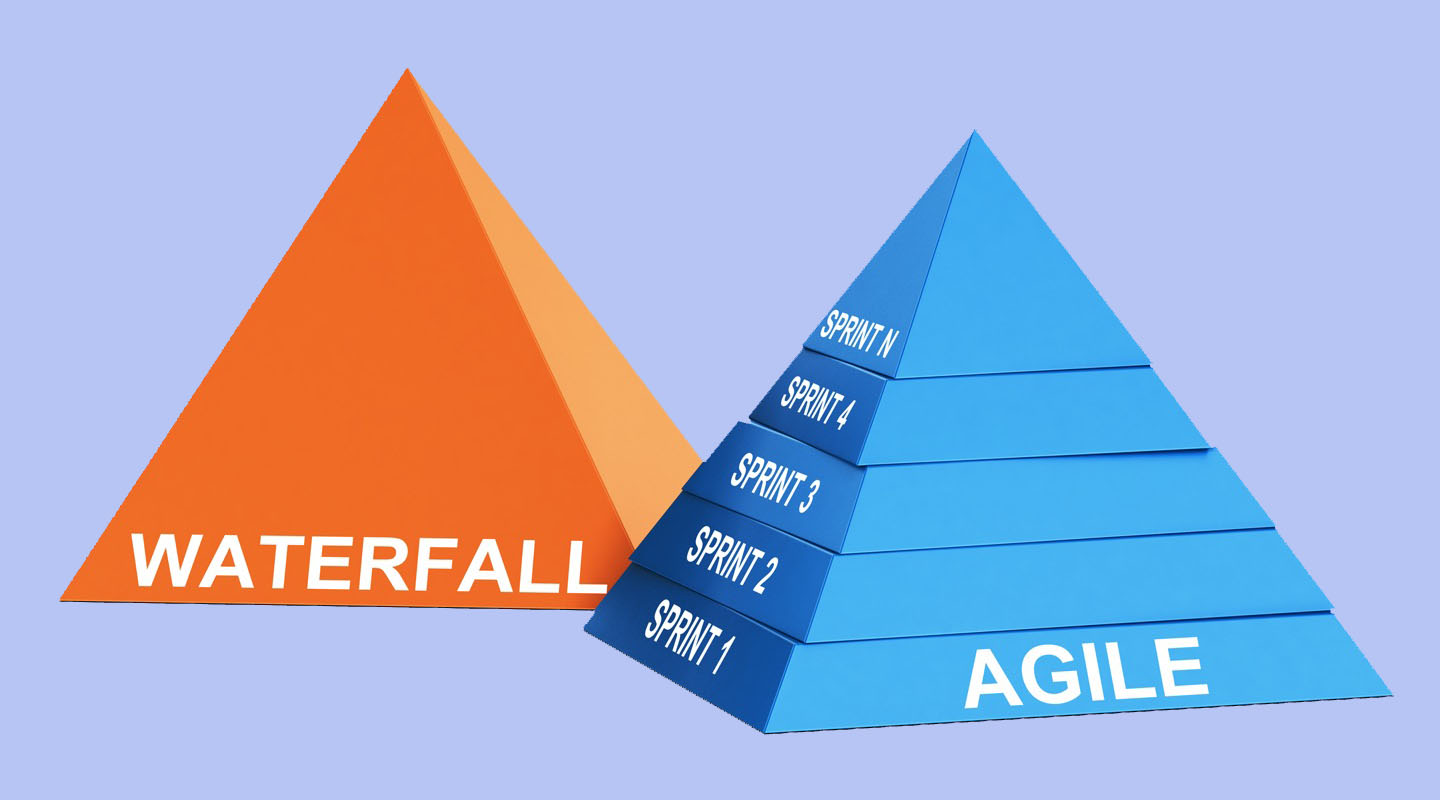Methods of project management have evolved. Agile vs. waterfall, which is better and why? This article will take a deeper look into Agile and waterfall and outline the good and bad of each methodology so that you can make an informed decision.
Agile Methodology
In the early 2000s, Agile project management emerged as a response to the waterfall methodology. It is an iterative and incremental approach to software development that emphasizes the rapid delivery of high-quality software products. Agile project management involves continuous collaboration between all project stakeholders.
Waterfall Methodology
The Waterfall methodology is a sequential approach to software development. In this model, the software product is developed in phases. These phases are requirements gathering, analysis, design, coding, and testing. This model has been in use since the 1970s and was popularized by IBM and other companies. However, it was criticized for its rigidity and inflexibility to deliver high-quality software products on time.
The good and bad of both methodologies will determine your choice for your next project. Here is a look at each one individually:
Agile vs. Waterfall: What’s the difference?
The Agile workflows are based on the following principles:
- Individuals and interactions over processes and tools
- Working software over comprehensive documentation
- Customer collaboration over contract negotiation
- Responding to change over following a plan
According to Contentful, “Agile works by breaking down the barriers of getting new products to customers quickly. It does this in a few ways. Agile fosters a collaborative, creative environment where teams work together on one product or project instead of an annual or bi-annual launch.“
Once a project is completed in the Agile approach, it is handed over to the user and internal stakeholders for testing and feedback. Then work begins on a new project iteration with changes based on this feedback. This methodology allows for adjustments as changes in requirements occur and for changes to be made sooner rather than later to meet deadlines.
The waterfall method works by following these steps:
- Define the requirements
- Build a working model
- Test and refine the model
- Deploy
The waterfall methodology is considered more reliable because it allows for a more in-depth analysis of project requirements and a better understanding of the scope of work before development begins. This allows for more accurate forecasting and project planning, which is helpful for organizations with strict budgeting requirements like government agencies or large corporations concerned with costs. However, the waterfall methodology can be slow to respond to changes in business objectives or marketplace conditions, resulting in missed deadlines and lost revenue opportunities.
This process is rigid and does not allow for any flexibility. It requires that all requirements are gathered prior to developing a product. Once design begins, it cannot be changed unless considerable effort is put into changing the design documents themselves. The fact that there are so many steps involved in this approach means it can take a long time before you get your hands on your end product. This can be problematic.
Agile vs. Waterfall—Which is the better project management methodology?
In the end, it all boils down to your project’s requirements and your company’s culture. If you need a flexible project management approach that can adapt to changing business needs, then Agile is probably the right choice. Agile is also ideal for projects with high uncertainty or risk. On the other hand, if you need a more structured approach that allows you to adhere to specific deadlines without compromising quality, then waterfall might be a better fit for your company’s needs.















Add Comment